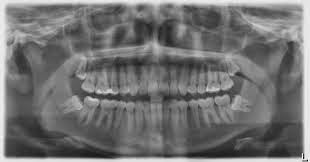An announcement from the Department of Health and Human Serivices recommending that the optimal level of fluoride in drinking water be set at .7 milligrams per liter saw wide coverage, including reports from two national nightly news broadcasts, a news wire, and national blogs and websites.
NBC Nightly News (4/28, story 7, 0:30, Holt) reported, “Federal health officials are lowering the recommended level of fluoride in drinking water for the first time in more than 50 years.”
The CBS Evening News (4/27, story 13, 0:30, Pelley) reported that on Monday, the Federal government “said that less fluoride should be added to the drinking water.” Currently, 75 “percent of Americans have fluoridated water. The Department of Health and Human Services said that fluoride is already in toothpaste and mouth wash and too much fluoride can discolor children’s teeth.”
The Washington Post (4/28, Bernstein) “To Your Health” blog reports that HHS now recommends that “drinking water contain .7 milligrams of fluoride per liter,” representing a change in the previous recommendation of “a range of .7 to 1.2 milligrams per liter” set in 1962.
The Nightly Business Report (4/27, Mangan) reports that Deputry Surgeon General Boris “Lushniak called the new standard ‘the correct measure to help prevent tooth decay and reduce the prevalence of fluorosis.” The Nightly Business Report adds that while the new standard “is only a recommendation,” it is “likely to be taken seriously by the approximately 75 percent of community health systems nationwide that currently” fluoridate their water “to lower the rate of tooth decay in the populations.”
Several news organizations refer to the ADA’s support of the announcement. The AP (4/28, Stobbe) reports that “water fluoridation has been a public health success, and communities should keep adding fluoride, said Kathleen O’Loughlin, the American Dental Association’s executive director.” O’Loughlin joined Lushniak when the new standard was announced yesterday.
The NPR (4/28) “Shots” blog and “All Things Considered” radio program reports that Dr. Lushniak said, “The new recommended level will maintain the protective decay prevention benefits of water fluoridation and reduce the occurrence of dental fluorosis.” NPR adds that “the decision was welcomed by groups such as the American Dental Association.”
CNN (4/28) reports that HHS said on Monday that dental fluorosis in the US “appears mostly in the very mild form – as barely visible lacy white markings or spots on the enamel,” adding that severe dental fluorosis is rare in the US. CNN also reports that the ADA “says the new recommended levels will still reduce tooth decay but minimize fluorosis,” stressing that it continues to support community water fluoridation. HHS assistant secretary for health Dr. Howard Koh said, “One of water fluoridation’s biggest advantages is that it benefits all residents of a community,” adding, “And fluoridation’s effectiveness in preventing tooth decay is not limited to children, but extends throughout life, resulting in improved oral health.”
Noting that Tucson, Arizona is only one of six US cities that does not provide optimal levels of fluoride in the drinking water – one of which is actually in the process of beginning fluoridation – the Arizona Daily Star (4/28, Innes) also reports on the HHS announcement. “According to the American Dental Association, fluoride supplementation should be considered for children who drink water with less than 0.6 milligrams per liter,” the Daily Star reports. Moreover, “Many health experts say that drinking water with below optimal fluoridation levels puts residents at an increased risk for cavities.”
Meanwhile, the ADA News (4/28) reports, “The Association commended the U.S. Public Health Service for issuing a final recommendation April 27 for the optimal level of fluoride for community water systems and said the ADA supports the new target.” ADA president Dr. Maxine Feinberg said, “It has now been 70 years since Grand Rapids, Mich., became the first U.S. city to begin adding fluoride to its water system,” adding, “Since then, decades of studies and the experience of tens of millions of people have affirmed that water fluoridation helps prevent cavities in both children and adults.”
In a second, much more brief article, the ADA News (4/28) reports that the CDC has posted a frequently asked questions (4/28) page on community water fluoridation. The ADA News notes that the CDC’s FAQ features a “break out box” for health professionals.
Also reporting on the story are The Hill (4/28, Ferris), Congressional Quarterly (4/28, Gustin, Subscription Publication), TIME (4/28, Sifferlin), the Washington Examiner (4/28, King), the Wichita (KS) Eagle (4/28, Dunn), and HealthDay (4/28, Thompson).


